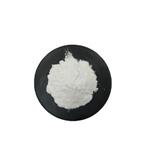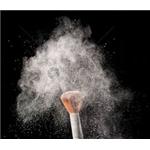- Aluminium Phosphate
-

- $79.00/ kg
-
2025-04-25
- CAS:7784-30-7
- Min. Order: 1kg
- Purity: 99%
- Supply Ability: 20ton
- Aluminium phosphate
-

- $6.00 / 1kg
-
2025-04-25
- CAS:7784-30-7
- Min. Order: 1kg
- Purity: 99%
- Supply Ability: 2000KG/Month
- Aluminium phosphate
-

- $100.00/ kg
-
2025-04-23
- CAS:7784-30-7
- Min. Order: 1kg
- Purity: 99%
- Supply Ability: 5000
|
| | Aluminium phosphate Basic information |
| | Aluminium phosphate Chemical Properties |
| Melting point | 1500 °C | | density | 2.56 g/mL at 25 °C (lit.) | | storage temp. | Inert atmosphere,Room Temperature | | solubility | Very slightly soluble in water, practically insoluble in alcohol. It dissolves in dilute solutions of mineral acids and alkali hydroxides. | | form | Powder | | Specific Gravity | 2.566 | | color | White | | Water Solubility | Insoluble | | Merck | 14,358 | | crystal system | Three sides | | Solubility Product Constant (Ksp) | pKsp: 20.01 | | Space group | P3121 | | Lattice constant | | a/nm | b/nm | c/nm | α/o | β/o | γ/o | V/nm3 | | 0.494291 | 0.494291 | 1.094761 | 90 | 90 | 120 | |
| | Dielectric constant | 6.0(Ambient) | | Exposure limits | ACGIH: TWA 1 mg/m3 | | InChI | InChI=1S/Al.H3O4P/c;1-5(2,3)4/h;(H3,1,2,3,4)/q+3;/p-3 | | InChIKey | ILRRQNADMUWWFW-UHFFFAOYSA-K | | SMILES | [Al+3].P([O-])([O-])([O-])=O | | CAS DataBase Reference | 7784-30-7(CAS DataBase Reference) | | EPA Substance Registry System | Monoaluminum phosphate (7784-30-7) |
| Hazard Codes | C | | Risk Statements | 34 | | Safety Statements | 26-36/37/39-45 | | RIDADR | UN 3260 8/PG 2 | | WGK Germany | 1 | | RTECS | TB6450000 | | TSCA | Yes | | HazardClass | 8 | | HS Code | 28352990 | | Toxicity | LD50 oral in mouse: > 5gm/kg |
| | Aluminium phosphate Usage And Synthesis |
| Description | Aluminium phosphate occurs in nature as the mineral, berlinite. Also, it occurs in nature in minerals, amblygonite, [NaAl(PO4)(OH)]; augelite, [Al2(PO4)(OH)3]; lazulite, [(Mg,Fe)Al2(PO4)2(OH)2]; variscite [(Al,Fe3+)(PO4)•2H2O]; and wavellite, [Al3(OH)3•(PO4)2•5H2O]. It is used as flux for ceramics; as cement in combination with calcium sulfate and sodium silicate; and in the manufacture of special glasses. It is also used in dried gel and therapeutically as an antacid. | | Chemical Properties | Aluminum phosphate adjuvant is a white hydrogel that sediments
slowly and forms a clear supernatant. | | Chemical Properties | Aluminum orthophosphate is a white crystalline solid which is often used in liquid or gel form | | Physical properties | White powdery solid (rhombic plate); the mineral berlinite (AlPO4) has hexagonal quartz-like structure; refractive index 1.546; mp > 1,500°C; density 2.566 g/cu3; insoluble in water and alcohol; Ksp 9.83x10-10 very slightly soluble in HCl or HNO3. | | Occurrence | The compound occurs in nature as the mineral, berlinite. Also, it occurs in nature in minerals, amblygonite, [NaAl(PO4)(OH)]; augelite, [Al2(PO4)(OH)3]; lazulite, [(Mg,Fe)Al2(PO4)2(OH)2]; variscite [(Al,Fe3+)(PO4)?2H2O]; and wavellite, [Al3(OH)3?(PO4)2?5H2O]. It is used as flux for ceramics; as cement in combination with calcium sulfate and sodium silicate; and in the manufacture of special glasses. It is also used in dried gel and therapeutically as an antacid. | | Uses | As a flux for ceramics, preparation of dental cement, cement with calcium sulfate and sodium silicate, special glasses, as gel in pharmacy.Aluminum phosphate is used as catalysts, molecular sieves, flux for ceramics and as a gel in pharmacy. It is employed in the preparation of dental cement, emollients and fire-resistant coating. It plays an important role as an anti-fouling agent in textile industry. | | Uses | Antacid; vaccine adjuvant | | Production Methods | Aluminum phosphate adjuvant is formed by the reaction of a
solution of aluminum chloride and phosphoric acid with alkali
hydroxide. | | Preparation | It is prepared by treating sodium aluminate with phosphoric acid. | | Brand name | Phosphaljel
(Wyeth-Ayerst). | | General Description | A colorless liquid. Insoluble in water. Corrosive to metals and tissue. | | Air & Water Reactions | Insoluble in water. | | Reactivity Profile | An acid. The resulting aqueous solutions contain moderate concentrations of hydrogen ions and have pH's of less than 7.0. They react as acids to neutralize bases. These neutralizations generate heat, but less or far less than is generated by neutralization of inorganic acids, inorganic oxoacids, and carboxylic acid. They usually do not react as either oxidizing agents or reducing agents but such behavior is not impossible. Many of these compounds catalyze organic reactions. | | Hazard | Solutions are corrosive to tissue. | | Health Hazard | TOXIC; inhalation, ingestion or skin contact with material may cause severe injury or death. Contact with molten substance may cause severe burns to skin and eyes. Avoid any skin contact. Effects of contact or inhalation may be delayed. Fire may produce irritating, corrosive and/or toxic gases. Runoff from fire control or dilution water may be corrosive and/or toxic and cause pollution. | | Fire Hazard | Non-combustible, substance itself does not burn but may decompose upon heating to produce corrosive and/or toxic fumes. Some are oxidizers and may ignite combustibles (wood, paper, oil, clothing, etc.). Contact with metals may evolve flammable hydrogen gas. Containers may explode when heated. | | Flammability and Explosibility | Non flammable | | Pharmaceutical Applications | Aluminum phosphate adjuvant is used in parenteral human and
veterinary vaccines.It activates Th2 immune responses, including
IgG and IgE antibody responses. | | Clinical Use | Phalu Gel's main active ingredient is aluminum Phosphorus. Aluminum Phosphate works to reduce excess stomach acid. This gel suspension, when taken to the stomach, will form a protective layer on the surface of the gastrointestinal mucosa, similar to the effect of mucus or mucosal protective factors to help cover the stomach from the impact of fluids. The aluminum phosphate layer in the stomach has a smooth dispersion effect, going to the ulcers in the stomach and making them heal faster, making the patient feel more comfortable and less painful. Aluminum Phosphorus, when used, does not affect the intestinal absorption of Phosphorus. Phalu-Gel will quickly reduce the pain of stomach ulcers and the discomfort of excess acid, help heal the ulcers quickly, and make the patient feel comfortable right away.Aluminum hydroxide, aluminum phosphate, and potassium aluminum sulfate (alum) are used as adjuvants in vaccines designed to stimulate systemic immunity. Aluminum salts are used in DPT, pneumocccal conjugate, hepatitis A, papilloma, anthrax, and rabies vaccines. Like other systemic adjuvants, they form an insoluble depot and slowly release the antigen, which stimulates an antibody response. | | Safety Profile | Corrosive to the eyes, skin, and mucous membranes. When heated to decomposition it emits toxic fumes of POx. Used as an antacid and as a cement component, flux for ceramics, dental cement, glass, and gels. See also ALUMINUM COMPOUNDS and PHOSPHATES | | Safety | Aluminum phosphate adjuvant is intended for use in parenteral
vaccines and is generally regarded as safe. It may cause mild
irritation, dryness, and dermatitis on skin contact. It may also cause
redness, conjunctivitis, and short-term mild irritation on eye
contact. Ingestion of large amounts of aluminum phosphate
adjuvant may cause respiratory irritation with nausea, vomiting,
and constipation. Inhalation is unlikely, although the dried product
may cause respiratory irritation and cough. Type I hypersensitivity
reactions following parenteral administration have also been
reported. | | Potential Exposure | Used as a flux in ceramics; in dental cements; in the manufacture of special glasses, paints and varnishes, cosmetics; making pulp and paper; as an antacid. | | storage | Aluminum phosphate adjuvant is stable for at least 2 years when
stored at 4–308℃ in well-sealed inert containers. It must not be
allowed to freeze as the hydrated colloid structure will be
irreversibly damaged. | | Shipping | UN1760 Corrosive liquids, n.o.s., Hazard class: 8; Labels: 8-Corrosive material, Technical Name Required. UN3260 Corrosive solid, acidic, inorganic, n.o.s., Hazard class: 8; Labels: 8-Corrosive material, Technical Name Required. | | Incompatibilities | A strong oxidizer; keep away from combustible materials. Violent reaction with reducing agents; strong bases. Material is an inorganic acid and will react, possibly violently, with bases; corrosive to metals, some plastics and body tissues | | Incompatibilities | The point of zero charge is related directly to the Al : P atomic ratio.
Therefore, the substitution of additional phosphate groups for
hydroxyl groups will lower the point of zero charge. Substitution of
carbonate, sulfate, or borate ions for hydroxyl groups will also
lower the point of zero charge. | | Regulatory Status | GRAS listed. Accepted for use in human and veterinary vaccines in
Europe and the USA. The limits for use in human vaccines are
0.85 mg aluminum/dose (FDA) and 1.25 mg aluminum/dose
(WHO). There are no established limits for use in veterinary
vaccines. Reported in the EPA TSCA Inventory. |
| | Aluminium phosphate Preparation Products And Raw materials |
|